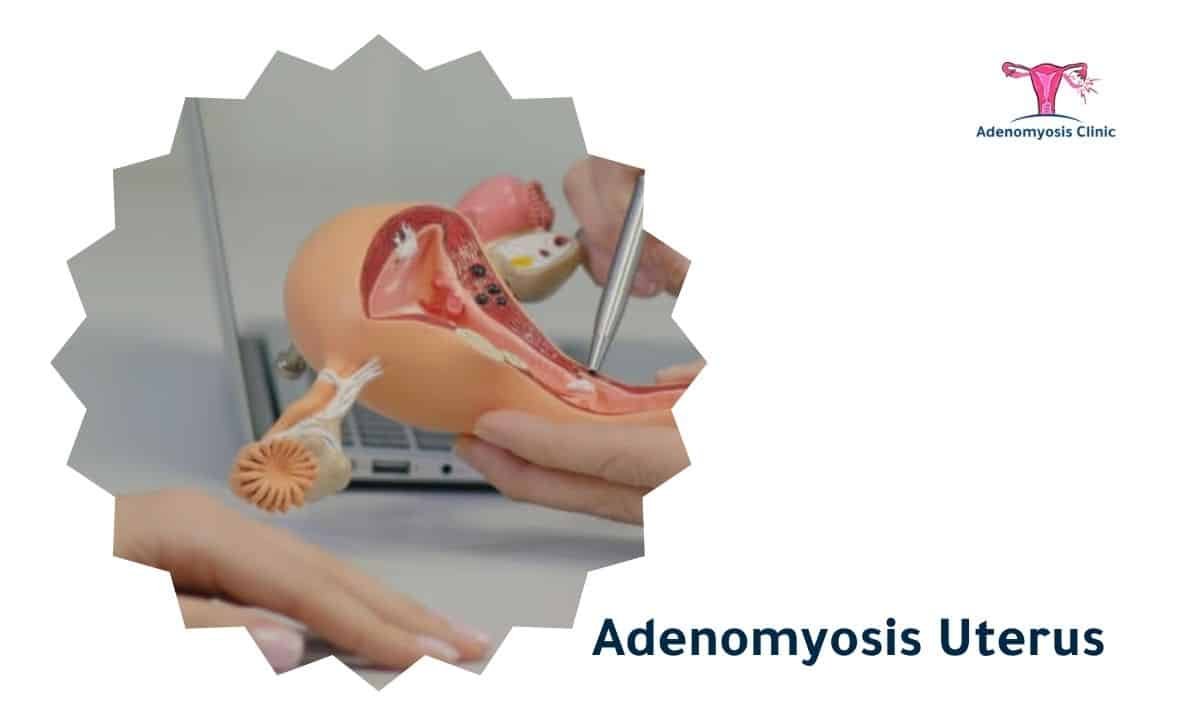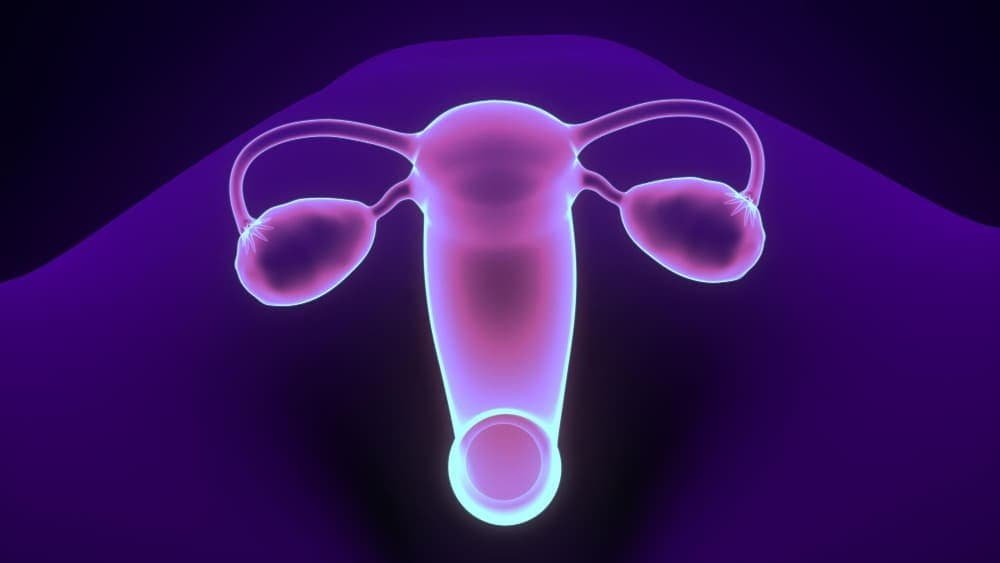Adenomyosis of the uterus is a common but often misunderstood condition where the tissue lining the uterus grows into the muscular wall. This can cause heavy and painful periods, chronic pelvic pain, and even infertility. While it can significantly impact quality of life, many women with adenomyosis remain undiagnosed.
This article will explore the symptoms, causes, diagnosis, and treatment options for adenomyosis uterus, providing crucial information for those affected and raising awareness about this important women’s health case.

What Is Adenomyosis Uterus?
Adenomyosis is a common, benign gynecologic disorder in women of reproductive age. This condition occurs when endometrial tissue (the lining of the uterus) grows abnormally into the muscular wall of the uterus (myometrium). It’s essentially an invasion of the uterine muscle by cells that belong in the uterine cavity. Adenomyosis is often confused with endometriosis (where endometrial tissue grows outside the uterus), but they are distinct.
What Causes Adenomyosis?
The exact cause of adenomyosis remains unclear, but it is thought to be associated with various hormonal and genetic factors. The condition typically occurs when endometrial cells from the uterus lining break through into the muscular wall of the uterus. Risk factors include prior uterine surgery, such as a C-section or fibroid removal, and it is more commonly diagnosed in middle-aged women and those who have had children.
What Are The Signs Of Adenomyosis?
Common symptoms of uterine adenomyosis include:
- Heavy and Prolonged Menstrual Bleeding: Excessive bleeding during periods.
- Pelvic Pain: Chronic pain in the pelvic region, which may worsen during menstruation.
- Menstrual Cramps: Severe and sharp cramps can extend throughout the period.
- Pressure Symptoms: A feeling of pressure or bloating in the lower abdomen.
- Pain During Intercourse: Dyspareunia, or pain during sexual intercourse, particularly deep penetration.
The symptoms can vary widely, and some women may experience mild symptoms or none at all, which makes diagnosis challenging.
What Is the Best Treatment for Adenomyosis?
The treatment for adenomyosis depends on the severity of the symptoms, the woman’s age, and her reproductive goals. Here are some of the most commonly recommended treatments:
- : Hormonal Therapy: Hormonal treatments such as birth control pills, intrauterine devices (IUD) that release hormones, and GnRH (gonadotropin-releasing hormone) agonists can help reduce menstrual bleeding and pain by controlling the growth of endometrial tissue.
- Anti-inflammatory Drugs: Nonsteroidal anti-inflammatory drugs (NSAIDs) can reduce pain and decrease menstrual flow.
- Uterine Artery Embolization (UAE): A minimally invasive procedure where small particles block the blood vessels that supply blood to the adenomyosis areas, reducing symptoms.
- Endometrial Ablation: This procedure involves destroying the lining of the uterus to reduce menstrual bleeding. However, it is only suitable for women who do not wish to have children in the future.
- Myomectomy: For women who wish to preserve fertility, a myomectomy to remove the adenomyotic tissue while leaving the uterus intact can be an option. However, it is less commonly performed for adenomyosis compared to fibroids.
- Hysterectomy: In severe cases where other treatments have failed and the woman does not wish to preserve fertility, removal of the uterus (hysterectomy) may be recommended. This surgery is the only definitive cure for adenomyosis.
The treatment choice should be based on a thorough medical examination and discussion between the patient and her healthcare provider, considering all individual factors and preferences. Managing adenomyosis often requires a comprehensive approach that addresses the disorder’s physical and emotional aspects.
Important Notes:
Adenomyosis is a benign (non-cancerous) condition.
It commonly affects women in their reproductive years.
Diagnosis can be challenging; imaging tests (ultrasound, MRI) and sometimes invasive examination may be needed.
Uterine Artery Embolization by Dr. Samir Abdel Ghaffar
Uterine artery embolization, performed by Dr. Samir Abdel Ghaffar, a consultant in interventional radiology, represents a significant advancement in treating uterine adenomyosis without needing surgery. This procedure involves the targeted embolization of the uterine arteries to block the blood flow to the adenomyotic tissue, reducing symptoms.
Dr. Abdel Ghaffar’s expertise in UAE provides a valuable option for women seeking relief from adenomyosis symptoms without the risks and recovery time associated with surgery. Dr. Abdel Ghaffar uses imaging technologies such as ultrasound to ensure precise delivery of embolic agents, effectively reducing the growth and symptoms associated with adenomyosis. This procedure is especially beneficial for women who wish to preserve their uterus and possibly maintain fertility.
What Happens if Adenomyosis is Left Untreated?
Adenomyosis is a benign but often painful condition where endometrial tissue, which normally lines the uterus, grows into the uterus’s muscular walls (myometrium). If left untreated, adenomyosis can lead to chronic pelvic pain and heavy menstrual bleeding. This can significantly impact the quality of life, leading to chronic fatigue and emotional distress.
Over time, the persistent heavy bleeding can also cause iron-deficiency anemia. Additionally, untreated adenomyosis may contribute to infertility and complications during pregnancy, including premature labor. The uterus may become enlarged and globular, adding physical discomfort and pressure symptoms that affect bladder and bowel function.
What is the difference between adenomyosis and endometriosis?
Adenomyosis and endometriosis are both gynecologic disorders that affect women, often characterized by pain and reproductive issues, but they differ significantly in their pathology and location of affected tissues.
Adenomyosis is when the endometrial glands and stroma (the tissue supporting the glands) invade the uterus’s muscle wall (myometrium). This invasion causes thickening of the uterine walls and can lead to an enlarged, often globular uterus. The main symptoms include heavy and painful menstrual bleeding, chronic pelvic pain, and, sometimes, infertility. Adenomyosis is confined to the uterine structure and characterized by diffuse or localized growth within the myometrial layers.
Endometriosis, on the other hand, occurs when endometrial-like tissue grows outside the uterus, commonly on the ovaries, fallopian tubes, the outer surface of the uterus, and other pelvic structures, including the bladder and bowel. This ectopic tissue growth can cause inflammation, pain, and scar tissue formation (adhesions). Symptoms of endometriosis include severe dysmenorrhea (painful periods), chronic pelvic pain, pain during intercourse, and infertility. The displaced endometrial tissue responds to menstrual cycle hormones, causing cyclic pain and bleeding in areas outside the uterine cavity.
The key differences between the two conditions are:
- Location of the Tissue Growth: Adenomyosis is internal to the uterus, whereas endometriosis involves tissue growth outside the uterus.
- Nature of Tissue Invasion: In adenomyosis, the invasion is within the walls of the uterus itself, leading to enlargement and thickening. Endometriosis is characterized by tissue functionally similar to the uterine lining but located outside the uterus, causing local and sometimes distant inflammation and pain.
- Symptoms and Impact: Both conditions share symptoms like painful and heavy periods and pelvic pain, but the nature and exact locations of the pain can differ. Endometriosis might lead to more diverse and widespread symptoms depending on the locations of the tissue growths.
Understanding these differences is crucial for medical professionals to provide appropriate treatment and management strategies for these potentially debilitating conditions. Both require careful diagnosis, often involving pelvic examinations, ultrasound imaging, and sometimes surgical interventions for accurate identification and treatment planning.
FAQS
What are the 4 Stages of Adenomyosis?
Adenomyosis is typically characterized based on the depth of penetration of endometrial cells into the myometrium and is often described in stages:
- Stage 1 (Mild): Endometrial cells are found beneath the endometrium but do not deeply invade the myometrium.
- Stage 2 (Moderate): The cells invade less than halfway through the myometrium.
- Stage 3 (Severe): The invasion extends beyond halfway through the myometrium.
- Stage 4 (Diffuse): The entire myometrium is infiltrated by endometrial cells, often leading to a bulky and diffusely enlarged uterus.
Symptoms of Adenomyosis
The symptoms of adenomyosis are often severe and can disrupt daily activities. Common symptoms include:
- Heavy and painful menstrual periods (dysmenorrhea)
- Chronic pelvic pain
- Enlargement of the uterus
- Prolonged menstrual bleeding
- Pain during intercourse
- Menstrual cramps that may worsen over time
Is Adenomyosis a Serious Problem?
Yes, adenomyosis can be a serious medical condition, particularly due to its impact on a woman’s reproductive and overall health. While it is a benign disorder, the symptoms can be debilitating. It often co-occurs with other gynecologic disorders, such as endometriosis, which can complicate diagnosis and treatment.
The impact on fertility and risks associated with heavy and prolonged menstrual bleeding make it a condition that warrants medical attention and appropriate management. Early diagnosis and treatment can help manage the symptoms and improve the quality of life for those affected.
In conclusion, Awareness and understanding of adenomyosis are crucial for affected women to seek timely and appropriate treatment, which can substantially alleviate symptoms and improve life quality. As research continues to evolve, it brings hope for more advanced and less invasive treatments in the future, aiming to offer relief and better outcomes for those living with this often debilitating condition.

 العربية
العربية 

